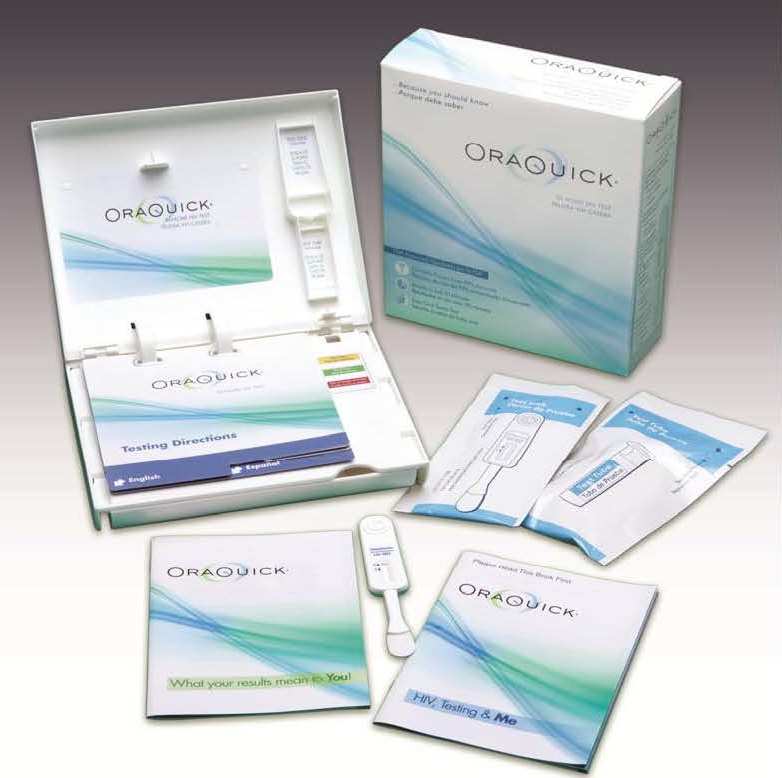Sensitivity and specificity of test kit for over-the-counter sale does not equal that of HIV assays performed in licensed and accredited clinical laboratories
Despite concerns about the potential for false positive results, an in-home rapid HIV test kit designed to be sold to consumers in pharmacies and other retail outlets cleared one more hurdle on the path to winning clearance by the Food and Drug Administration (FDA) to come to market.
On May 15, the 17 voting members of FDA’s Blood Products Advisory Committee (BPAC), concluded that the benefits of the OraQuick in-home HIV test outweigh the potential risks for consumers, according to a story published at cbsnews.com. The FDA advisory panel’s decision came despite earlier reported concerns regarding decreased accuracy of the OTC test when performed by consumers as compared to results from the professional-use version.
Public Health Benefits Trump Initial Concerns about Performance
“There is considerable personal and public health value in informing infected, but otherwise untested, persons of their true positive HIV status,” FDA staff wrote, according to a story in MedPage Today.

This photo shows the contents of the OraQuick in-home HIV test kit, manufactured by OraSure Technologies, Inc., of Bethlehem, Pennsylvania. An FDA advisory panel recently reviewed this diagnostic test and recommended that it be cleared for market. (Photo by OraSure Technologies.)
Pathologists and clinical laboratory managers have followed the advances in diagnostic technology used in testing for HIV and other infectious diseases. The goal has always been to speed the time to answer, while keeping the sensitivity and specificity of these various rapid assays at clinically-acceptable levels. The application of the OraQuick in-home HIV test to be sold over the counter (OTC) to consumers provides an example of how fast this diagnostic technology has improved.
The BPAC panel considered findings from clinical testing conducted by Bethlehem, Pennsylvania-based OraSure Technologies, Inc. (NASDAQ: OSUR), manufacturer of the test, a company press release stated. They also considered benefit analysis data based on recently published research on HIV transmission rates.
Clinical testing revealed that the test could produce one false positive for every 3,750 true negatives, MedPage reported. Approximately 1,100 people per year would get test results indicating they have HIV, when in fact they do not. “[The benefit of the test] is offset in some measure by HIV-positive individuals who receive an incorrect message that they are not infected,” FDA officials stated in the MedPage piece.
However, as the company press release pointed out, according to the Centers for Disease Control and Prevention (CDC), approximately 1.2 million people in the United States have HIV. Of that number, 240,000 are unaware they have the virus. CDC estimates that these people are responsible for up to 70% of the 50,000 new HIV infections that occur annually.
Despite the fact that this rapid HIV test kit delivers a sensitivity that is less than that of HIV tests performed in CLIA licensed and CAP-accredited clinical laboratories, testimony presented by physicians and HIV advocates during the public comment session supported approval of the new OTC test as a useful tool in limiting the spread of the virus. “We are always looking for game changers, and we believe this is one of them,” said Carl Schmid, Deputy Director of the AIDS Institute, in the CBS story. “Not only will it help reduce the number of [infections] but it will bring more people into care and treatment.”
If 1 million individuals were tested with the new in-home test, the OraSure press release pointed out, an estimated 9,087 HIV positive individuals could be identified. That means that 700 potential onward transmissions of HIV could be prevented annually. Further, public health officials cited a recent survey of gay and bisexual men that found that 84% said they would test themselves more frequently if they could buy an OTC HIV test, CBS reported. A clinical trial of the OraQuick test also found that 96% of those who learned they were HIV-positive said they were highly likely to follow up with a doctor or clinic for treatment options, according to the MedPage story.
Benefits Include Results without Clinical Laboratory Analysis
The OraQuick HIV test works by swabbing the upper and lower gum, then inserting the swab into a vial of test fluid. After twenty minutes, if two colored lines appear on the test, it indicates the user may have HIV. The test package provides information booklets that include directions for calling an HIV support center. The new assay represents an advantage over existing FDA-approved OTC HIV tests. These require taking a blood sample and sending it to a laboratory for analysis, then waiting for the results.
OraSure has marketed a professional version of the test to various healthcare practitioners since 2004, the CBS piece reported. Although the company has not indicated a cost for the OTC test, the professional version costs $17.50. According to the company press release, close to 25 million of the professional-use tests have been sold.
The FDA panel’s decision could signal that the agency is growing more comfortable with the continuing trend in direct-to-consumer medical testing as these diagnostic tests increasingly demonstrate accuracy closely comparable to traditional central or core clinical laboratory testing. This may particularly be the case when they deem public health benefits outweigh associated risks to consumers. Savvy pathologists and clinical laboratory managers will keep a keen eye on this movement of diagnostic testing out of the medical laboratory as they formulate long term strategy.
—Pamela Scherer McLeod
Related Information:
FDA panel backs at-home HIV test that analyzes mouth swab in 20 minutes
FDA Staff Flags False Results of Home HIV Test
Clinical Pathology Laboratories Should Expect More Direct-to-Consumer Testing



